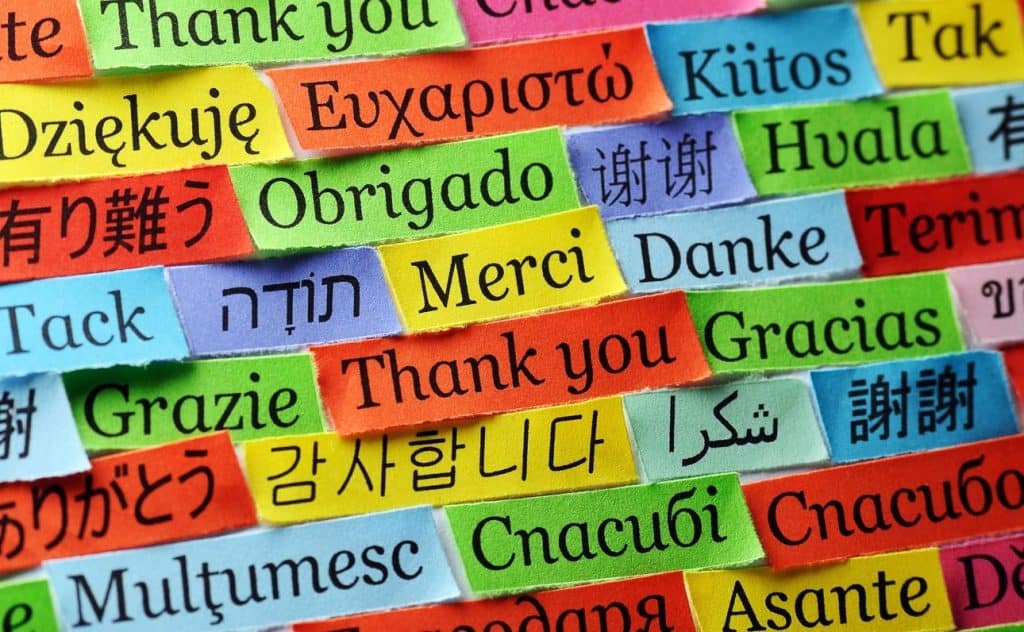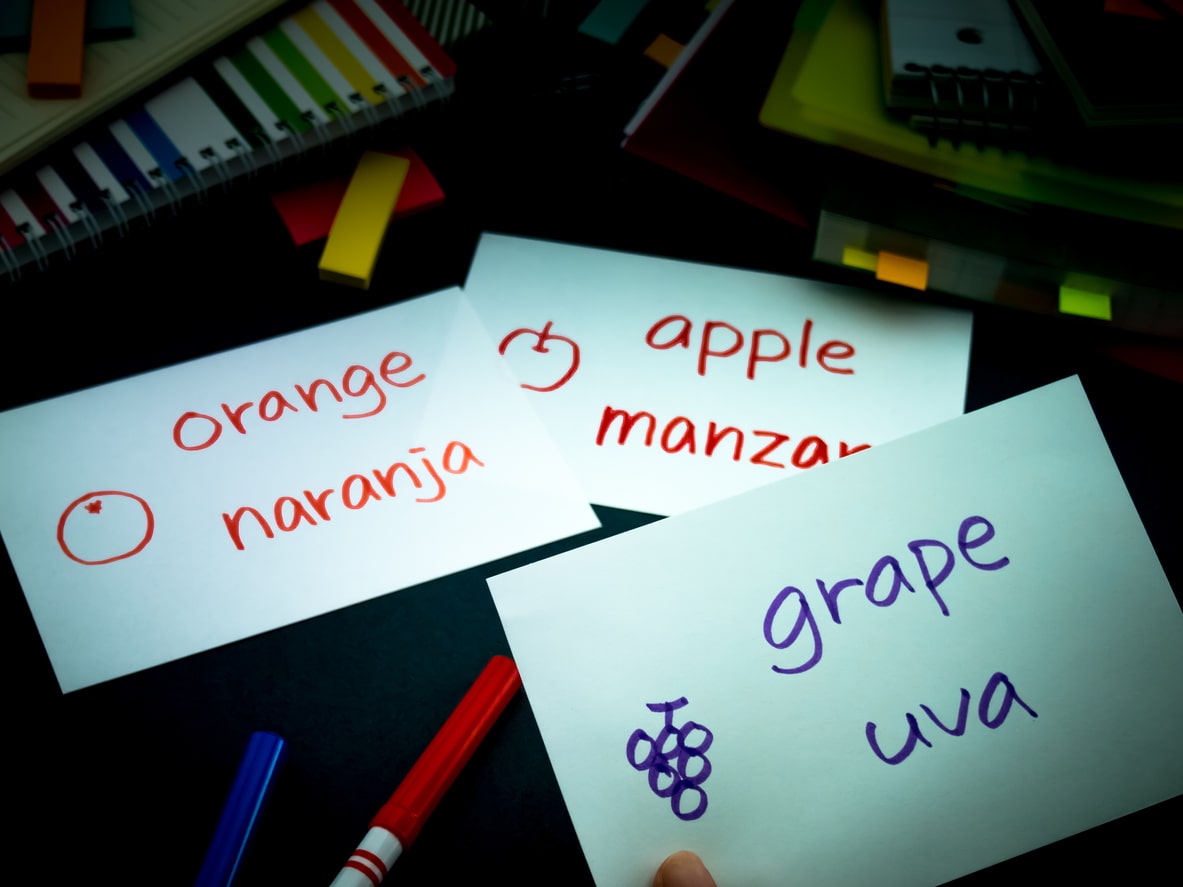Every language learner has had that moment. You know, the one where they’re desperately trying to remember the Portuguese word for “pineapple” (it’s abacaxi, of course!) but the word has just vanished from their memory. This terrible scenario serves to reiterate the importance of learning and remembering core vocabulary in order to communicate effectively and build fluency. Of course, it’s essential to understand the grammatical structures of your target language but it’s incredibly difficult to understand or be understood if you don’t have the right words at your disposal.
This blog post therefore aims to provide some ideas and inspiration for language educators seeking to help their students build up and remember a bank of key vocabulary that they can call on in all situations. Let’s start by trying to quantify the scale of the challenge!
How many words do students need to know to be fluent?
Obviously there are hundreds of thousands of words in every language, but when a student starts learning the language the vast majority of them will not be immediately relevant. So immediately try to help them get a good understanding of the key and most useful words, which you can then build on according to their needs/interests and the direction of the class. It’s also worth bearing in mind that, according to researchers analysing the Brown Corpus, a core vocabulary of 2,000 words is enough to understand 80% of any foreign language. That sounds like a lot but encourage your students to be realistic – a little and often is the best route forwards! Just focusing on learning 10 new words every day will, for example, help students to learn 70 new words in a week, 280 new words every month and 3,360 in a year!
What’s the best way to learn vocabulary so it sticks?
Below are 7 ways to help students really learn vocabulary more effectively in their target language. It’s vital to encourage students to make vocabulary learning part of their core daily routine. This helps ensure that they have the words at their disposal to communicate effectively in all formats of their target language.
1. Make new vocabulary relevant
As with most learning activities, if it engages students then the learning is more likely to sink in. It’s the same with vocabulary – we most effectively remember what is most relevant to us so making vocabulary lists of random words is probably not going to be that effective! To help make words stick, encourage students to try and make a relevant connection for them. If they’re learning about kitchen utensils then encourage them, for example, to use sticky notes on cupboards and drawers to act as reminders.
We also remember places, events, dates, songs which have an emotional connection for us. It’s logical therefore to use games, films and songs to try and learn words. Not only is it something a little different from the usual approach, but it can be genuinely helpful for students to link / associate words with songs or films that they like. It’s obviously important that students check words they don’t know in a dictionary first!
2. Memorable mnemonics
Mnemonics are a great way to build memory and relevance and can be a really powerful tool in language learning generally and learning vocabulary specifically. A mnemonic is a pattern, idea or association that learners can use to help them remember something but they are usually formed of images or word associations. The best mnemonics are those that students create themselves, so encourage their creativity to flow!
3. Spaced repetition
Obviously repeating words from vocabulary lists will help students to remember them, but just repeating the same words constantly during the day is not going to work. It’s far better to repeat them regularly over a period of several days or weeks.
Spaced repetition works by following this simple principle. Rather than repeatedly studying a word 100 times in the same day, a student would learn more effectively if they repeated it 10 times a day for 10 days. Importantly, there’s lots of research showing that this approach does improve language learning outcomes. An American team of researchers studied a group of language learners over a 9 year period and found that increasing both the number of repetitions and the length between study intervals improved retention and memory.
4. Write, Look, Cover, Repeat (WLCR)
This is perhaps the oldest and most commonly-used way of learning vocabulary. Take a pen and a piece of paper, draw a vertical line down the middle of the page and fill one side of the paper with words in your native language. Then write the corresponding word in your target language opposite. Learn and memorise both sets of words before covering one side of the list and attempting to remember the answers. Swap sides and repeat until you’re happy with progress! Very old-school, yet highly effective.
5. Teach vocabulary with flashcards
Again a classic approach that builds upon WLCR by incorporating an element of randomness. This approach works well using physical cards or through an app using digital flashcards. Easy, quick and simple to do – just make sets combining words and/or images in both your students’ target language and mother tongue. Mix them up and test yourself on your own or with a partner.
6. Write it down!
For many students the simple act of writing down a word or phrase with a translation is a good way of lodging it in their minds and remembering it. Encourage your students to keep a record of new vocabulary that they come across (either in a notebook or even on their phone). This applies whenever they watch a Netflix series, read a magazine or talk with a partner in class. Not only do they benefit when writing the word down, the list provides an easy way for regular review whenever students have a free moment.
7. Use it
Our last suggestion for building vocabulary is a simple one – keep encouraging your students to use the words and phrases that they have learned through meaningful communication with a partner or a friend.
Researchers from the University of Montreal in Canada found that repeating words aloud to another person was a much more effective way of memorising them than just saying to yourself. This is perhaps no great surprise given that the more a student actively engages with another person, the more their fluency and linguistic memory can be developed. As with much of language learning, it all comes down to practice!
How do Sanako products help educators to build students’ vocabulary?
Sanako produces a range of language teaching tools that help educators to improve their students’ range of vocabulary. The tools enable educators to:
- Create activities to test students’ vocabulary in Sanako Connect using a wide variety of media including sound files, text, presentations, videos and/or web pages.
- With Sanako Connect’s flashcards you can give your students virtually unlimited opportunities to practice key concepts and vocabulary. Your students can work on your flashcards whenever and wherever they want and also using their mobile devices.
- Use Connect to create tailored vocabulary assessments for individual students or groups. Connect can easily help educators to build and mark multiple choice quizzes, free text entry and gap fill quizzes to identify what they know and where more work is needed.
- Facilitate simultaneous conversation practice. Students have ample opportunity to use their new vocabulary with partners and / or groups. Teachers can also listen in, give feedback in real-time and even record each group discussion for later review.
If you’d like to find out more about how Sanako’s dedicated language teaching solutions could transform your approach to building students’ vocabulary knowledge, please contact us now to arrange your FREE demo!


